Two newly added articles, many photos and a video
Reliefs with Figures of Guardians, Celestial Ancestors, and Mythical Animals of the Kaanu’l Mayan Dynasty Found in Mexico
La Brújula Verde, Magazine Cultural Independiente
Source: Instituto Nacional de Antropología e Historia (INAH) de México
by Guillermo Carvajal, October 22, 2024
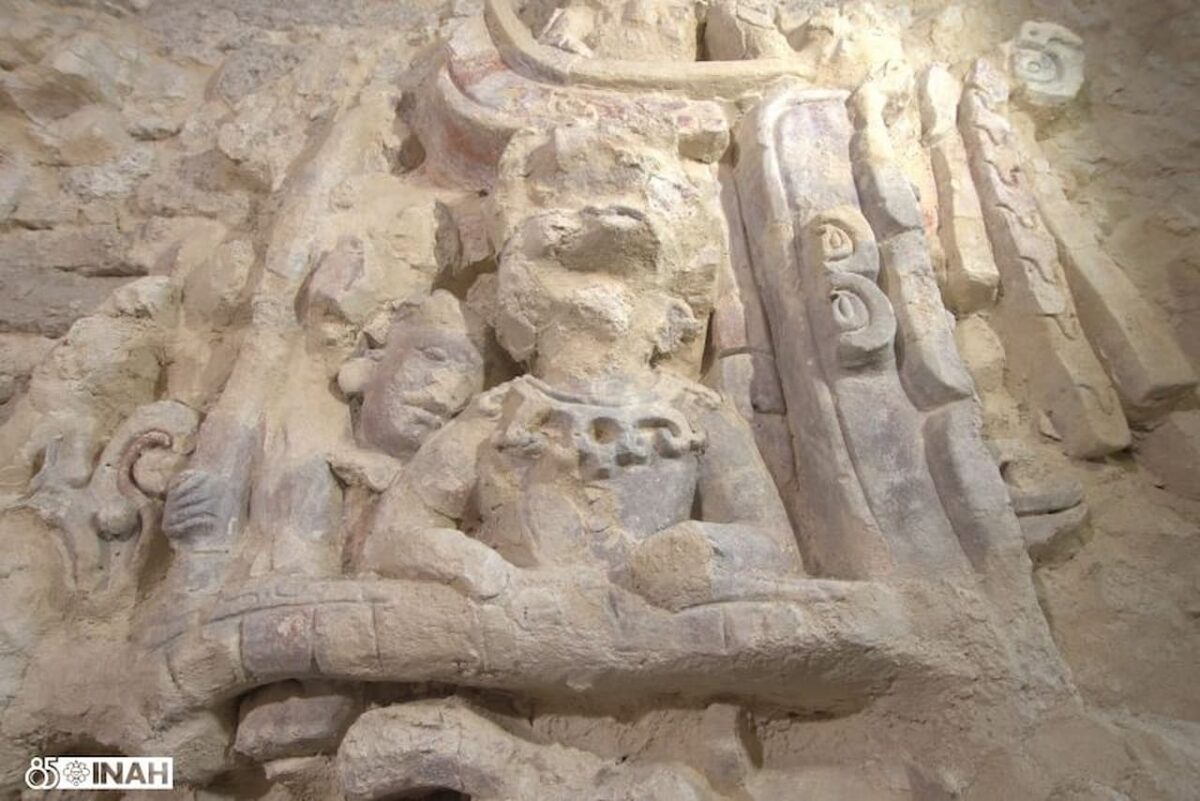
The finding of the millenary vestiges, which have representations of ancestors, mythical animals and other traits of power, derives from the application of the Promeza. Credit: Gibrán Huerta / INAH
The recent archaeological discovery in the Dzibanché Archaeological Zone, Quintana Roo (Mexico), has provided new insights into the grandeur of the Kaanu’l dynasty, one of the most influential in the ancient Mayan civilization.
Under the serpent emblem, known as “kaan” in the Mayan language, this powerful lineage ruled vast territories that today include parts of Mexico, Belize, and Guatemala, consolidating its hegemony during the Early Classic period.
This find, carried out by the National Institute of Anthropology and History (INAH) through the Archaeological Zones Improvement Program (Promeza), has led to the identification of stucco-modeled reliefs decorating the facades of two platforms.
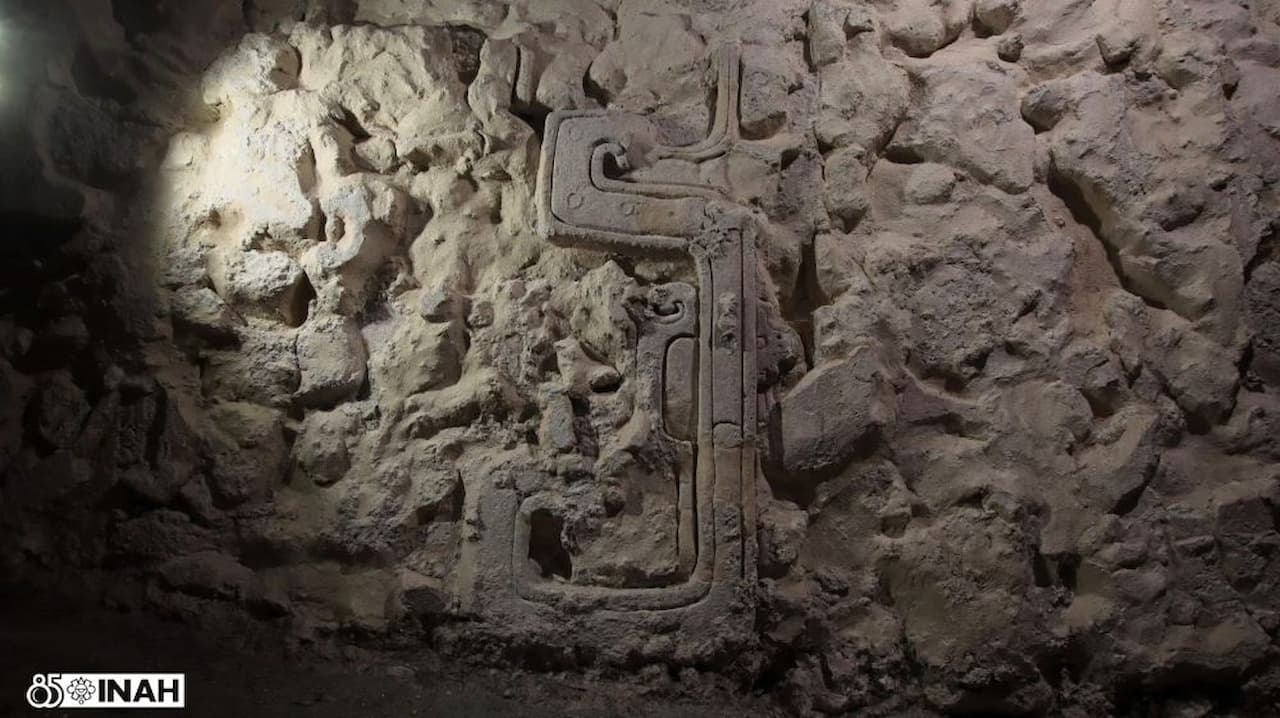
Under the symbol of the serpent (kaan, in Mayan), this lineage governed numerous lordships in the territories now occupied by Mexico, Belize and Guatemala. Credit: Gibrán Huerta / INAH
The discovery has been hailed as a significant achievement in the research of this dynasty. The platforms are located in the western area of Ball Court II, an area that had already been explored in previous seasons, but whose architectural details are only now coming to light.
The reliefs, made with artistic precision that demonstrates the high level of Mayan civilization, depict scenes combining figures of guardians, ancestral celestial figures, and mythical animals, all elements that reinforce the importance of the serpent as a symbol of power and divine ancestry for the Kaanu’l dynasty.
One of the most fascinating scenes found shows two guardians watching over a pedestal, which likely housed a sculpture of a Kaanu’l ruler, according to the glyphs adorning the podium. On another platform, a depiction of ancestors appears to inhabit the night sky, surrounded by stars and serpents, suggesting a fusion of Mayan and Teotihuacan iconography.
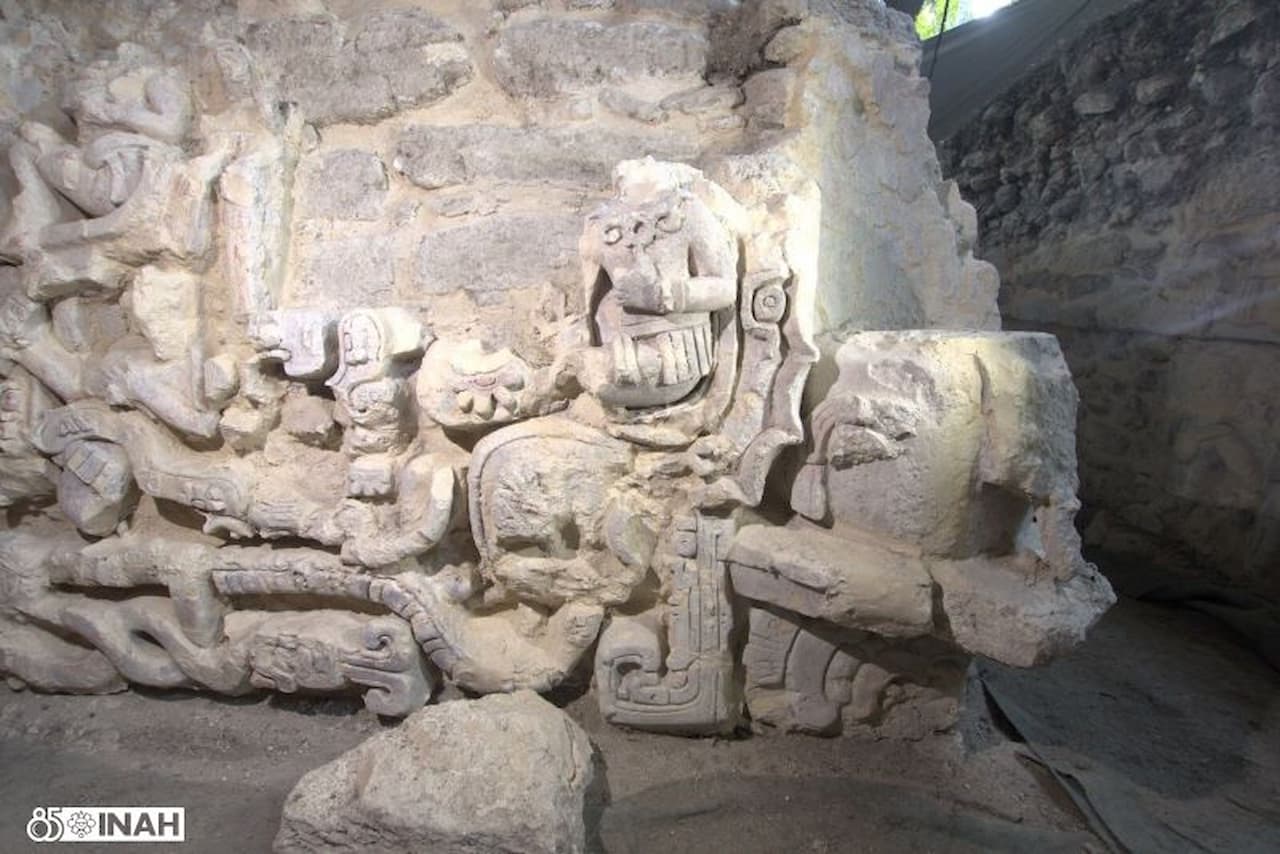
INAH discovers three facades with reliefs alluding to the Kaanu’l dynasty in the Dzibanché Archaeological Zone. Credit: Gibrán Huerta / INAH
This blend of cultural influences highlights the level of exchanges between different pre-Columbian civilizations. A third relief includes mythical animals associated with constellations, a recurring theme in Mayan cosmological beliefs.
The conservation of these relics has been a delicate process, as the stuccos retain traces of red, blue, yellow, and black pigments, requiring restorers to proceed with extreme caution. Humidity and exposure to the open air further complicate this work, which began in December 2023 and is expected to continue until late 2024. In this regard, the team of 98 people working at Dzibanché, consisting of archaeologists, restorers, architects, and other specialists, faces the challenge of deciding whether to leave the reliefs exposed to the public or to cover them again to ensure their preservation.
In addition to the archaeological work, photographs have been taken that could, in the future, be used to generate photogrammetric models. These models would not only facilitate the creation of replicas for exhibition but also allow experts to study the details of the reliefs without compromising their integrity. This approach demonstrates the commitment of INAH and Promeza to preserve Mexico’s cultural heritage while advancing its study.
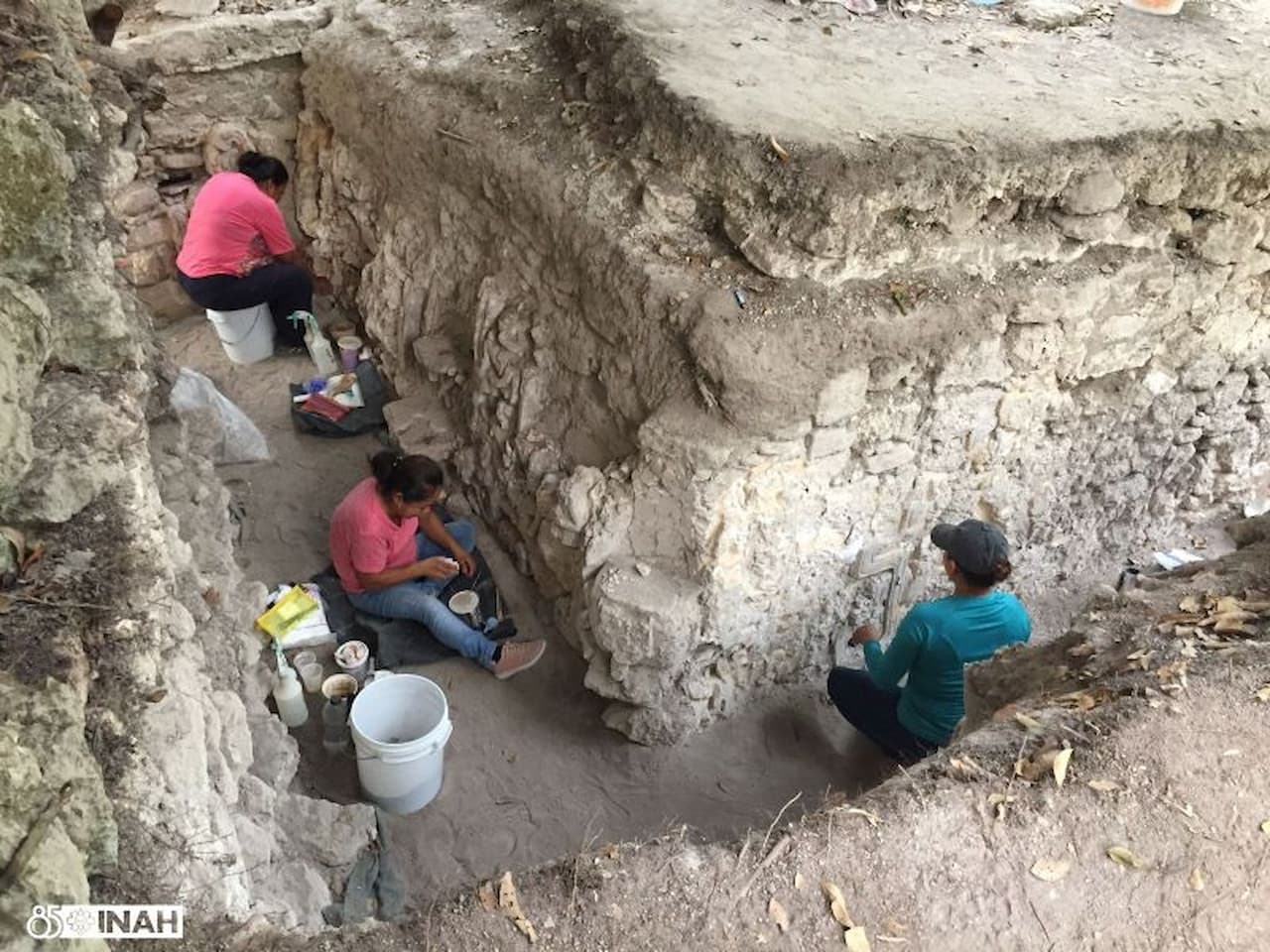
A work team of 98 people, including specialists and assistants, is working on the conservation of the vestiges. Credit: Sandra Balanzar / INAH
The discovery of these reliefs in Ball Court II has surprised specialists, who did not expect to find such elaborate decorations in this particular area. However, as Sandra Balanzario Granados, director of Promeza in Dzibanché, explains, these findings underscore the importance this place held for the Kaanu’l dynasty. This dynasty not only left an impressive architectural legacy but also forged a bond between rulers and deities through the serpentine iconography that characterizes these reliefs.
The temporal context of the stucco reliefs coincides with the peak of Dzibanché between 500 and 600 A.D., when the city reached its height under Kaanu’l rule. Later, the dynasty split into two branches, one of which settled in Calakmul, another important Mayan city.
Finally, it is worth mentioning that, in addition to the reliefs, Promeza has enabled the restoration of other significant buildings in Dzibanché, such as the Temple of the Owl and the Temple of the Cormorants. This joint effort between archaeologists and restorers is bringing one of the most emblematic cities of Mayan culture back to life, helping to better understand the role of the Kaanu’l dynasty in Mesoamerican history.
Three Snake dynasty reliefs found at Maya ball court
The History Blog, Oct.31, 2024
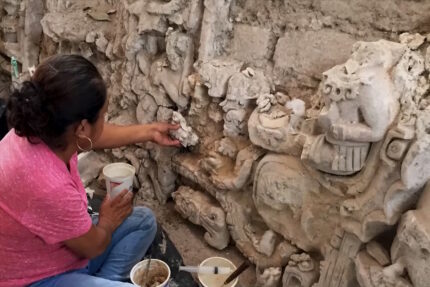
Three facades with elaborate reliefs have been discovered in a ball court of the ancient Maya city of Dzibanche, southeastern Mexico. They date to the Early Classic period (500-600 A.D.) and depict symbols and ancestors of the powerful Kaanu’l (Snake) dynasty.
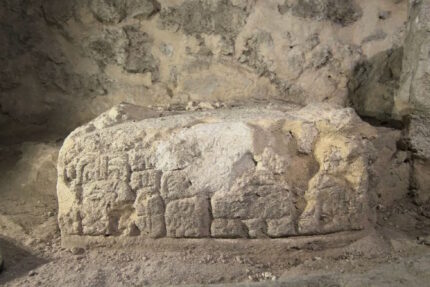
The stucco reliefs decorate two platforms on the Ball Game II court. The three facades averaging about 10 x 5 feet in dimension, and still retain traces of the original polychrome paint in red, blue, yellow and black. These are the first reliefs discovered on a ball court in Dzibanche, and archaeologists with the National Institute of Anthropology and History ( INAH ) were surprised to find such significant iconography on more modest structures.
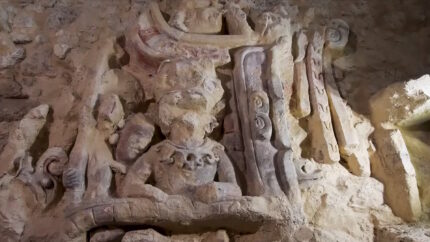
The first scene shows two guardians flanking a pedestal that once held a sculpture. This podium incorporates graphic symbols alluding to a ruler of the Kaanu’l dynasty. The second presents images of individuals representing Mayan ancestors in the night sky, accompanied by stars, snakes and other motifs characteristic of Mayan and Teotihuacan iconography. The absence of the central sculpture suggests that it may have been removed by the city’s inhabitants centuries ago. The third scene displays a set of mythological animals associated with constellations.
A common element in the three scenes is the representation of intertwined snakes, “which indicates that we are looking at images with which the rulers of Dzibanché sought to reaffirm their lineage. In pre-Hispanic Mayan societies, the hierarchs were seen as representatives of the gods on Earth,” explains Balanzario Granados.
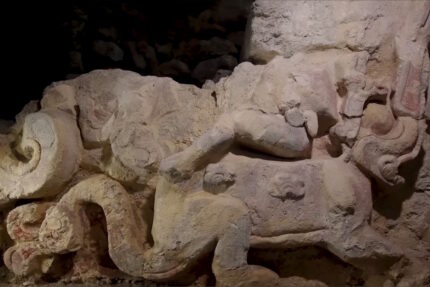
Archaeologists unearth stunning Maya murals and reliefs at Dzibanché
by Dario Radley, October 31, 2024
Archaeologists with Mexico’s National Institute of Anthropology and History (INAH) at the ancient Maya city of Dzibanché have unearthed three stucco reliefs that depict scenes of the powerful Kaanu’l (or Snake) dynasty. Located in Quintana Roo, Mexico, Dzibanché—an early center for the Maya civilization dating back to 300 BCE—served as the initial stronghold of the Kaanu’l rulers, who later expanded their influence to vast regions in present-day Mexico, Belize, and Guatemala.

An archaeologist cleans facade with reliefs found at Dzibanche, Mexico. Credit: INAH
The new findings, which date to the Early Classic period (500-600 CE), were discovered on two platforms west of the site’s Ball Game II court, a ceremonial space for the Maya ballgame, an activity combining athleticism and ritual devotion. These platforms, each approximately 10 by 5 feet, display the first stucco reliefs ever uncovered on Dzibanché’s ballcourt, which archaeologists believe were meant to reinforce the dynasty’s authority.
Sandra Balanzario Granados, head of the INAH’s Archaeological Site Improvement Program (Promeza) at Dzibanché, described the discovery as a breakthrough: “Although we had found stucco reliefs on larger buildings, we would never have thought of finding such decorated façades on a ball court with such profound meanings as these ones apparently have,” she explained.
Each of the three relief scenes offers a glimpse into the mythological and celestial beliefs of the Kaanu’l dynasty. The first relief features two figures standing guard beside a pedestal, originally intended to support a sculpture, with symbols referencing a Kaanu’l ruler. The second scene depicts ancestral figures in a cosmic setting, surrounded by stars and intertwining serpents—motifs that reflect the Kaanu’l’s divine connection as rulers.

Relief depicting enthroned figure. Credit: INAH
Epigrapher Alexander Tokovinine noted the striking blend of Maya and Teotihuacán iconography, particularly the serpent symbolism, which underscored the dynasty’s claim to a godly lineage. The third panel portrays a series of mythological animals linked to constellations, further emphasizing the rulers’ divine right and their cosmological power.
